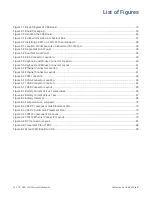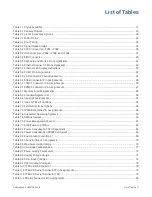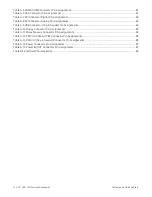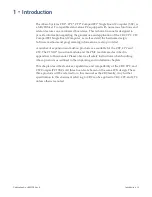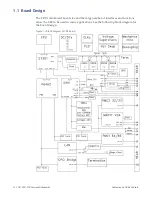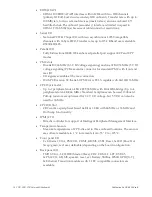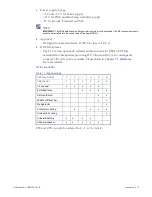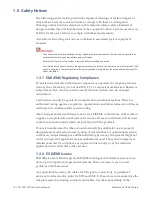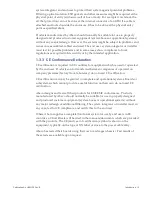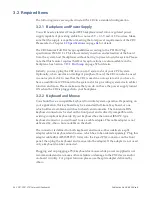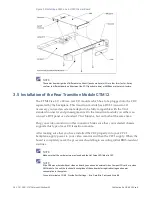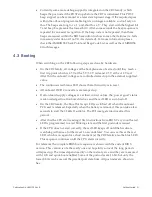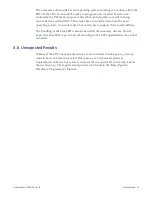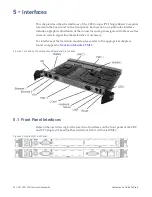
Publication No. HRMCP9 Rev. B
Unpacking and Inspection 21
2.3 ESD
The discharge of static electricity, known as Electro Static Discharge or ESD, is a
major cause of electronic component failure. The CR9 has been packed in a static-
safe bag which protects the board from ESD while the board is in the bag. Before
removing the CR9 or any other electronic product from its static-safe bag, be
prepared to handle it in a static-safe environment.
You should wear a properly-functioning antistatic strap and ensure you are fully
grounded. Any surface upon which you place the unprotected CR9 should be static-
safe, usually facilitated by the use of antistatic mats. From the time the board is
removed from the antistatic bag until it is in the card cage and functioning properly,
extreme care should be taken to avoid ‘zapping’ the board with ESD. You should be
aware that you could ‘zap’ the board without you knowing it; a small discharge,
imperceptible to the eye and touch, can often be enough to damage electronic
components. Extra caution should be taken in cold and dry weather when static
easily builds up.
Only after ensuring that both you and the surrounding area are protected from ESD,
carefully remove the board or module from the shipping carton by grasping it by the
front panel and the connectors. Place the board, in its antistatic bag, flat down on a
suitable surface. You may then remove the board from the antistatic bag by tearing
the ESD warning labels.
2.4 Warning
This is a Class A product. In a domestic environment, this product may cause radio
interference in which case the user may be required to take adequate measures.
NOTE
Drain static electricity before you install or remove any parts. Installing or removing modules without
observing this precaution could result in damage to this and/or other modules in your system.
2.5 Initial Inspection
After unpacking the CR9, you should inspect it for visible damage that could have
occurred during shipping or unpacking. If damage is observed (usually in the form
of bent component leads or loose socketed components), contact Abaco for
additional instructions. Depending on the severity of the damage, it may need to be
returned to the factory for repair. DO NOT apply power to the board if it has visible
damage. Doing so may cause further, possibly irreparable damage, as well as
Содержание CR9 Series
Страница 24: ...24 CP9 CR9 CT9 Celeron M Pentium M Publication No HRMCP9 Rev B Figure 2 2 Handling the CR9 Board ...
Страница 77: ...Publication No HRMCP9 Rev B Transition Module CTM12 77 Figure A 1 CTM12 Component Locations ...
Страница 90: ...90 CP9 CR9 CT9 Celeron M Pentium M Publication No HRMCP9 Rev B Figure B 1 Mount PMC Board to CR9 ...




